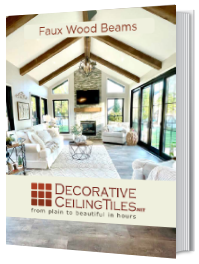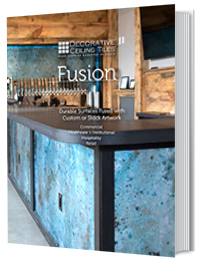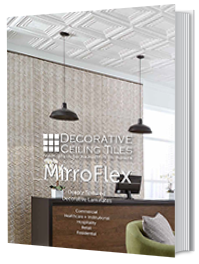Faux Beams for Ceilings: What You May Not Know
Written by Milan Jara on 21st Nov 2022

Thinking about installing faux beams for ceilings? There are things to consider when planning what material to use and your overall look.
Generating a country-chic appearance and old-world charm, faux beams provide a sense of strength to a space. Initially found in more traditional homes, they have reappeared in country and farmhouse designs, generating a shabby chic look. Yet, whatever style you incorporate it in, faux beams for ceilings are sure to add warmth.
The History
While beams are a standard feature used in construction and undeniably have a visual appeal, their origins were completely functional. Large beams were incorporated to support and evenly distribute the weight of roofs and upper floors. The precursor to early beams, sticks and logs were placed across stone walls to act as a roof.
As tools evolved, people could create longer beams using large trees, providing greater coverage and fewer leaks. Thus, exposed beams became commonplace. They began to appear in European, Middle Eastern, and Oriental castles and cottages. It later expanded globally as changes in architecture grew.
As technology advanced during the 1800s, lumber mills generated mass production of wood beams. Lumber replaced massive beams; they were of a smaller dimension and framed rafters or joists
Things again changed between 1950 and 1980 as large beams and high ceilings were concealed using suspended ceilings to save energy. However, the concept behind using wood (or wood-looking) beams never fully expired. It only evolved.
Faux Beams for Ceilings Versus Structural Beams

When it comes to structural beams, installation is best left to professionals. They are part of a support structure, and if they are not done correctly, the results could be disastrous. Additionally, they can weigh up to a thousand pounds, requiring a crane to move them into position.
For most locations, the process requires the approval of an engineer before obtaining a building permit. Inspections are also done throughout the process.
This brings us to decorative faux beams. These are used purely for visual appeal. They are available in various styles suitable for any décor and can be installed as a DIY project. All you need is a rudimentary knowledge of carpentry to install them successfully.
Note that some of these beams may contain a bit of weight, depending on what material you are using. Sometimes, you may require an engineer to examine your structure before installing them to ensure the safety of your house.
Installation
Installation can be done in two ways. One involves more work yet has a certain charm, while the other installs within a fraction of the time.
Prefabricated Faux Beams
Composed of high-density polyurethane or molded fiberglass, these beams are incredibly lightweight. You can install them without the need for an engineer’s approval. If your ceiling cannot support additional weight, prefabricated beams are the best option.
They are available in various sizes and styles that look like steam l-beams or solid wood. Additionally, you can have them stained or painted to blend in with your décor. Installation involves mounting blocks to your ceiling. Then, lightweight beams fit over your blocks and are further attached with screws.
Dimensional Lumber
A popular installation method includes positioning directional lumber across your ceiling. Then, a three-sided wood box covers it, creating a wood beam appearance. Depending on the exposed ceiling beam’s length, the weight of the wood used for your box cover combined with the number of faux wooden beams used may add extra weight of up to one thousand pounds to your structure.
Not all structures can support the added weight, so it is best to consult an engineer before installation to see if your house can sustain this extra load.
When to Use Faux Wood Beams
Since these beams are grander in appearance, they tend to do well in rooms containing vaulted or high ceilings. These types of beams boost the overall appeal of the home. Yet, this look isn’t entirely exclusive to high ceilings.
For a non-vaulted ceiling, you can add horizontal faux wooden beams to a flat ceiling. Before installing them, though, ensure that you have enough headroom. Local building codes often require the ceiling to be at least 7’6” above the floor. The bottom of the beams needs to remain above this height.
Tips on Incorporating Faux Beams Into Your Style

For an old-country appeal, select boards that bear cross-cut marks, making them appear handhewn. This look is perfect for places with high or vaulted ceilings or farm-style décor. They additionally are perfect for woodland cottages or mountain cabins.
Decorative beams don’t need to be rustic. Painted beams can provide a gorgeous appearance when placed in contemporary homes. Pairing white walls with a complementary colored beam generates a breezy, airy feeling when decorating a vaulted ceiling. Glossy black provides a stark contrast when paired with modern, contemporary designs with glass or chrome accents.
For the appearance of a massive roof truss,install a ridge beam (a single beam that expands the length of your ceiling at the highest point). Using a ridge beam along with sloped or horizontal members creates this look.
Use beefy arched interior faux beams with a high ceiling for a cathedral feel. Steel beams highlighting exposed ductwork generate an industrial feel to a room, which may be perfect for basements.
The Downside
Faux wood beams on high ceilings are challenging to clean. You may require the assistance of a long-handled duster to remove light dust. However, if they start to look grimy, you may need to get up on a ladder once a year for a deeper clean.
If you are in an older home and have removed the dropped ceiling in favor of adding faux ceiling beams, expect an increase in utility costs. Suspended ceilings often retain warmth in a home, depending on the material. Taking it out creates additional space that needs to be cooled or heated.
Incorporating ceiling fans may help to circulate air, while installing radiant flooring may keep the heat on the floor level.
Final Thoughts
Faux beams for ceilings may require some considerations depending on installation methods. While the prefabricated ones are easy to install and lightweight, many homeowners may want to create them on their own. This allows you to customize the look to match your home’s style. However, since they are lightweight, prefabricated faux wood ceiling beams tend to do better structurally. They don’t burden the house with extra weight.




